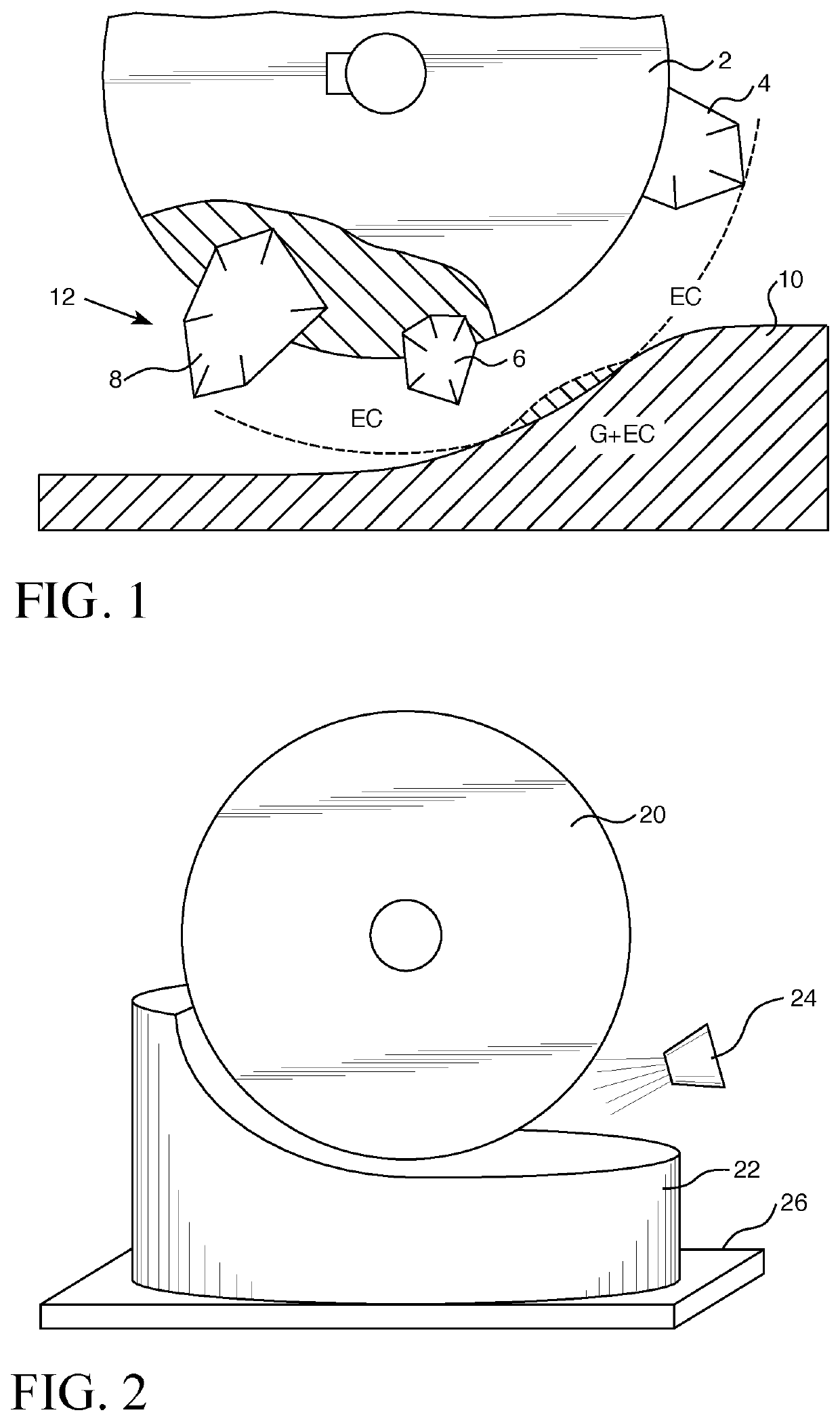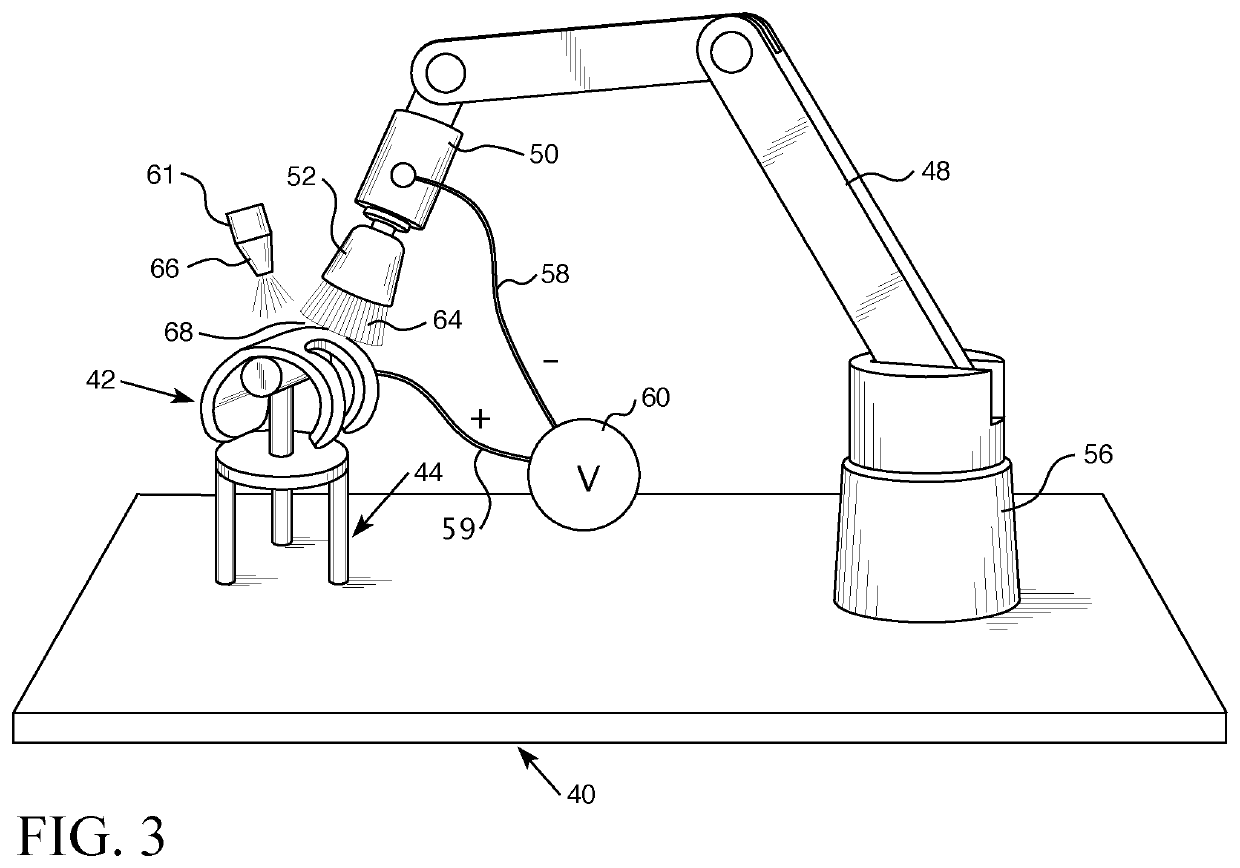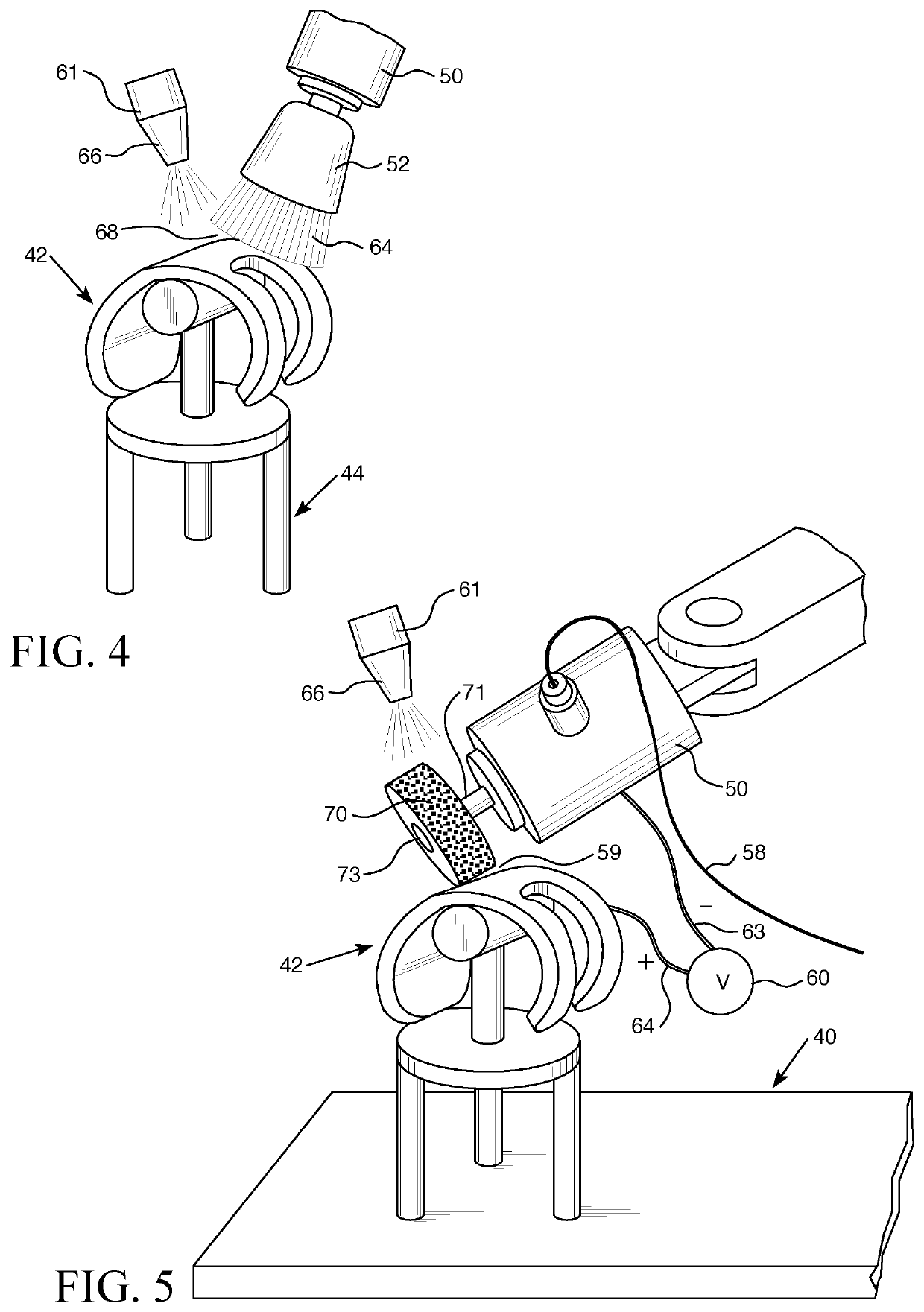Method and apparatus for finishing complex and curved surfaces using a conformal approach for additively manufactured products and other parts, and the resultant products
a technology of complex and curved surfaces, applied in the direction of cleaning using tools, chemistry apparatus and processes, manufacturing tools, etc., can solve the problems of increasing the cost and lead time of manufacturing such parts, time-consuming and laborious multi-step finishing processing, and the known methods for shaping and finishing these products are complex and costly to employ, so as to facilitate more effective creation and ensure the effect of quality
- Summary
- Abstract
- Description
- Claims
- Application Information
AI Technical Summary
Benefits of technology
Problems solved by technology
Method used
Image
Examples
Embodiment Construction
[0058]Referring now to FIGS. 3 through 5, there is shown one embodiment of the apparatus for practicing the method of the present invention in creating a product through the use of conformal molecular decomposition processes. For the overall device, another embodiment could be a 3 to 5 axis MDP machine (not shown). In addition to robotic controls, the controlled motion of the conformal head movement relative to the complex surface could be accomplished on a traditional three or five axis machining center. The part could remain stationary and the conformal head moved by the three or five axis machining center to correct orientation for the conformal head to be approximately perpendicular to the surface of the part. As shown in FIGS. 3 and 4, a support table 40 has a workpiece 42 secured thereto by a base 44. The workpiece 42 is electrically insulated from the rest of the system. In this embodiment, a robotic arm 48 has a base 56 which is fixedly secured to Table 40 while permitting r...
PUM
| Property | Measurement | Unit |
|---|---|---|
| Time | aaaaa | aaaaa |
| Length | aaaaa | aaaaa |
| Electrical conductivity | aaaaa | aaaaa |
Abstract
Description
Claims
Application Information
 Login to View More
Login to View More - R&D
- Intellectual Property
- Life Sciences
- Materials
- Tech Scout
- Unparalleled Data Quality
- Higher Quality Content
- 60% Fewer Hallucinations
Browse by: Latest US Patents, China's latest patents, Technical Efficacy Thesaurus, Application Domain, Technology Topic, Popular Technical Reports.
© 2025 PatSnap. All rights reserved.Legal|Privacy policy|Modern Slavery Act Transparency Statement|Sitemap|About US| Contact US: help@patsnap.com



